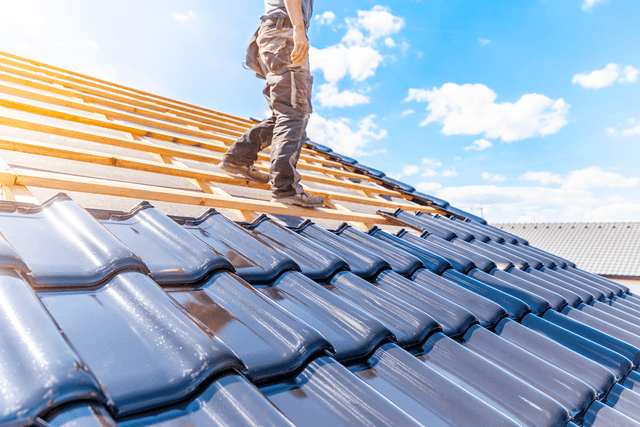Your roof works hard every day to keep your home safe and dry. But like anything else, roofs don’t last forever. So, what happens when your roof starts to age or show signs of wear? Should you replace it right away, or wait until there’s a big problem? With top roofing trends focusing on longer-lasting materials and smarter installations, many homeowners are choosing to act early before trouble starts.
Let’s take a look at the signs, risks, and timing so you can make the best decision for your home.
Why Waiting Can Be Risky
It might be tempting to put off a roof replacement, especially if your roof isn’t leaking. But waiting too long can lead to bigger and more expensive problems. Here’s what can happen if you delay:
- Water Damage – Small cracks can let water seep in. That can damage your walls, ceilings, or even the inside of your home.
- Mold Growth – Moisture from a leaky roof can cause mold, which is bad for your health.
- Structural Issues – A weak or sagging roof can damage the rest of your house over time.
- Higher Costs – Minor issues can turn into major repairs, costing more than a full replacement would have.
- Home Value Drop – If your roof looks old or worn out, it can make your home harder to sell.
Signs It’s Time to Replace Your Roof
You don’t have to wait for a leak to know it’s time. If you notice any of these signs, it might be time for a new roof:
- Missing or curled shingles – Shingles should lie flat. If they’re cracked, curled, or missing, your roof is at risk.
- Granules in the gutter – Shingles lose little bits of grit over time. If you find them in your gutters, your roof may be wearing out.
- Sagging areas – A sagging roof can mean there’s water damage or wood that’s starting to rot.
- Higher energy bills – If your roof isn’t sealing in heat or cool air, you might see your energy bill go up.
- Moss or black streaks – These can signal aging or damage, especially on older roofs.
If your roof is more than 20 years old, it’s smart to start planning ahead, even if you don’t see damage yet.
When It’s Okay to Wait
Not all roof problems mean it’s time for a full replacement. Sometimes, a simple repair is all you need. You might be able to wait if:
- The damage is small and only in one area
- Your roof is still fairly new
- You have a good insurance policy that covers the damage
- The issue is cosmetic and not causing leaks
Still, it’s a good idea to get a professional inspection to be sure.
When’s the Best Time to Replace a Roof?
You can replace your roof in any season, but some times are better than others:
- Fall – Cool temps and mild weather make this the best time for roofing work.
- Summer – Popular time because of warm days, but late summer storms can cause delays.
- Spring – Good for roofing, but rain might slow things down.
- Winter – Some contractors work in winter, but cold temperatures can make the job harder.
No matter the season, try to schedule your project early. Roofers get busy fast!
Final Thoughts
If your roof is getting old or showing signs of damage, it’s better to replace it sooner rather than later. Waiting too long could lead to leaks, mold, or bigger repair bills. But if your roof is still in good shape and only has minor issues, a repair might do the trick, for now.
The best thing you can do? Keep an eye on your roof and don’t ignore the warning signs. When in doubt, get a roof inspection so you can make a smart, safe choice for your home.


